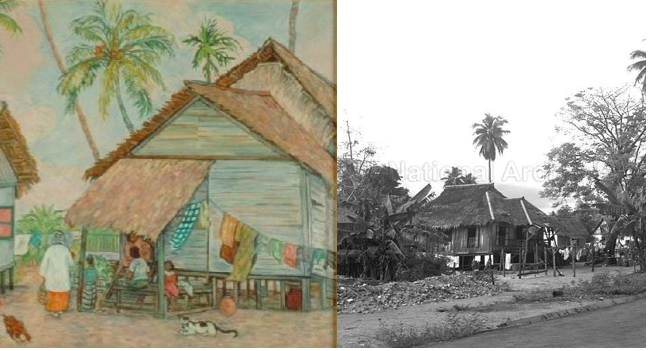Kampong Amber was one of the many kampongs (villages) that dotted Singapore in the past.
Situated between East Coast Road and Amber Road, life at the kampong, which no longer exists today, was captured and immortalised in a 1961 oil painting by Singaporean artist, Georgette Chen.
[caption id="" align="aligncenter" width="512"] Source: NHB Facebook[/caption]
Source: NHB Facebook[/caption]
Kampong Amber was well-known in the past for its hawkers selling cheaply priced dishes, such as mee rebus, lontong and nasi lemak.
Between the late 1800s and early 1900s, the kampong's inhabitants lived alongside the residences of rich Chinese businessmen, such as one of the founders of the Chinese Commercial Bank , Lee Choon Guan.
The bank, along with Ho Hong Bank and the Oversea-Chinese Bank, would later be amalgamated to form Oversea-Chinese Banking Corporation (OCBC).
Lee's wife was known to throw lavish parties at their residence in the Kampong Amber area. These were well attended by Singapore's rich and famous folks from the Chinese and British communities.
Here are pictures of what Kampong Amber looked like in the 1950s:
[caption id="" align="aligncenter" width="744"] Kampong Amber in 1950. Source: NAS[/caption]
Kampong Amber in 1950. Source: NAS[/caption]
[caption id="" align="aligncenter" width="741"] Kampong Amber in 1950. Source: NAS[/caption]
Kampong Amber in 1950. Source: NAS[/caption]
In the 1970s and 1980s, when kampongs were gradually phased out in Singapore, Kampong Amber faded into memory.
Top image from NHB Facebook and NAS.
If you like what you read, follow us on Facebook and Twitter to get the latest updates.
If you like what you read, follow us on Facebook, Instagram, Twitter and Telegram to get the latest updates.
